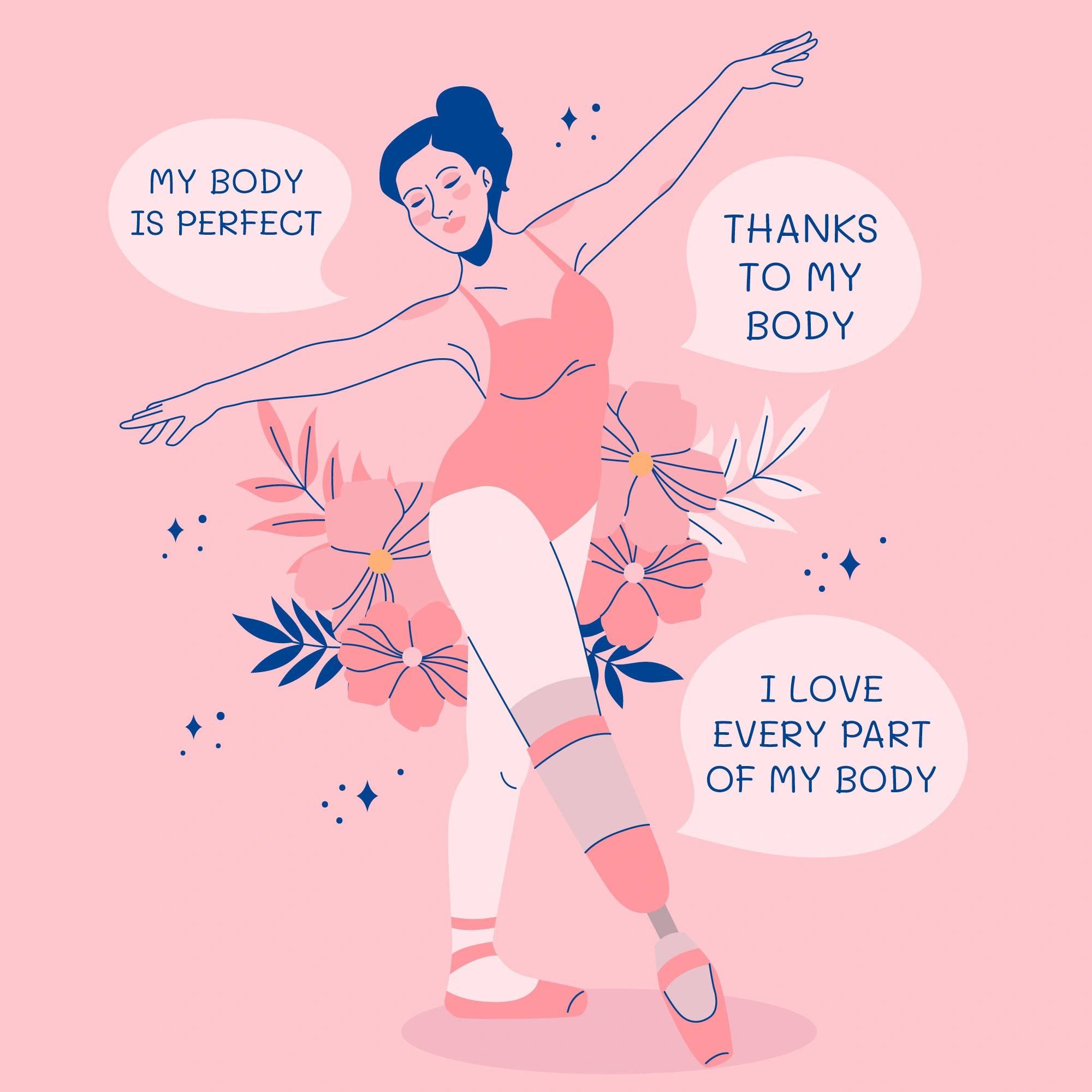“Best Belly Fat Workouts for Women Over 40 You Can Do at Home”
“It’s Never Too Late to Get Strong, Fit, and Flat.”
Start Your Flat Belly JourneyTable of Contents

📝 Why Belly Fat Increases After 40
Why Belly Fat Increases After 40 — Here’s What You Should Know
If you’ve ever wondered why belly fat increases after 40, you’re definitely not alone. Many women begin to notice that even with the same diet and lifestyle, their waistline becomes harder to manage as they get older. This shift isn’t just in your head—it’s rooted in science, hormones, and the natural changes your body goes through. In this article, we’ll break it down in simple terms so you know what’s happening—and what you can do about it.
1. Hormonal Shifts That Affect Fat Storage
One of the biggest reasons belly fat increases after 40 is due to changing hormone levels. As women approach perimenopause and menopause, estrogen levels decline. Estrogen plays a key role in regulating fat distribution, especially around the hips and thighs. When it drops, your body starts to store more fat in the abdominal area.
At the same time, cortisol, the stress hormone, may become harder to regulate. This can lead to more visceral fat—the kind of fat that surrounds internal organs and can raise your risk for heart disease and type 2 diabetes.
2. Slower Metabolism
Your metabolism naturally slows down as you age. Starting in your 30s, you begin to lose lean muscle mass—a process called sarcopenia. Since muscle burns more calories than fat, a decrease in muscle slows your metabolism, making it easier to gain weight—especially around the belly—even if you’re eating the same amount of food as before.
3. Less Physical Activity (Without Realizing It)
Let’s be honest: by the time we hit 40, life gets busier. Between managing work, kids, and everything else, it’s easy to become less active—even if you don’t feel like you’ve slowed down. But even small drops in daily movement can lead to fat gain over time, especially if you’re not incorporating regular exercise or strength training.
4. Changes in Sleep & Stress Levels
Stress and poor sleep are often overlooked factors. When you’re not sleeping well (which becomes more common with age), your body produces more ghrelin (the hunger hormone) and less leptin (the fullness hormone). Add in high stress levels, and you’ve got a perfect storm for emotional eating and fat storage, mostly around the waist.
5. What You Can Do About It
Here’s the good news: it’s absolutely possible to reverse belly fat gain after 40. It just takes a slightly different approach:
Focus on strength training to rebuild lean muscle
Eat a high-protein, whole-foods diet
Prioritize stress management and better sleep
Add low-impact cardio or daily walking
Avoid crash diets—they only make things worse
Final Thoughts
Understanding why belly fat increases after 40 gives you the power to do something about it. It’s not about doing more—it’s about doing things differently. With smart workouts, better nutrition, and a focus on recovery, you can take control of your health—and your waistline—at any age.
- Related Reading:
Check out our other guide on: “Why Belly Fat Increases After 40 – And The 7-Step Natural Formula to Melt It Away”
Why Belly Fat Increases After 40? Hormonal & Metabolic Changes Explained
As we step into our 40s, many of us notice a stubborn increase in belly fat — even if our lifestyle hasn’t drastically changed. You may be eating the same and working out just as much, but your waistline seems to have a different plan. So, why belly fat increases after 40? The answer lies in the natural hormonal and metabolic changes that come with age.
Hormonal Changes After 40
One of the biggest culprits behind increased belly fat after 40 is the shift in hormones. For women, perimenopause and menopause lead to a drop in estrogen levels. This hormonal decline often causes fat to redistribute from the hips and thighs to the abdominal area.
Men also experience a gradual decline in testosterone, which plays a role in muscle mass and fat distribution. Lower testosterone can lead to increased fat storage, particularly around the midsection.
Slower Metabolism
Another major reason why belly fat increases after 40 is a slower metabolism. As we age, our Basal Metabolic Rate (BMR) decreases — meaning we burn fewer calories at rest. This makes it easier to gain weight, especially in the form of visceral fat, which surrounds our abdominal organs.
Loss of Muscle Mass
With age, we naturally lose lean muscle mass — a process called sarcopenia. Since muscle burns more calories than fat, this loss leads to fewer calories burned throughout the day. As a result, even small dietary indulgences can lead to weight gain, primarily in the belly area.
Increased Stress and Cortisol
Balancing work, family, and health can become even more stressful in your 40s. Chronic stress elevates cortisol, a hormone that promotes fat storage — especially around the belly. So, if you’re constantly stressed, it could be contributing to your expanding waistline.
How to Fight Back
Prioritize protein and strength training to maintain muscle mass.
Get quality sleep and manage stress with mindfulness or yoga.
Cut back on processed carbs and sugar, which spike insulin and promote fat gain.
Move more, even if it’s just walking daily.
Final Thoughts
Understanding why belly fat increases after 40 can empower you to make smarter lifestyle choices. It’s not just about willpower — your body is going through real changes. But with the right strategy, you can stay fit, healthy, and confident well into your 40s and beyond.
Related Reading:
Check out our other guide on: HIIT vs Strength Training vs Yoga — Which Works Best for Belly Fat After 40?
Benefits of Working Out at Home – Your Health, Your Space, Your Rules
In today’s fast-paced world, finding time to hit the gym can feel like a challenge. But here’s some good news: working out at home can be just as effective — and even more rewarding. Whether you’re short on time, prefer privacy, or want to avoid the commute, home workouts come with a long list of advantages.
Let’s explore the top benefits of working out at home that can help you stay fit, motivated, and consistent.
1. Convenience and Time-Saving
One of the biggest benefits of working out at home is convenience. No need to drive, wait for equipment, or pack a gym bag. You can fit in a workout any time — early morning, during a lunch break, or even late at night. This flexibility helps you stay consistent, which is key to long-term results.
2. Cost-Effective
Say goodbye to expensive gym memberships or studio fees. With minimal investment in basic equipment (like dumbbells, resistance bands, or a yoga mat), you can create an effective workout routine at home. Plus, countless free workout videos and apps make it easier than ever to follow a structured plan.
3. Privacy and Comfort
Feel shy at the gym? At home, you can work out in your own space, wear whatever you want, and go at your own pace. This comfort boosts confidence, especially for beginners or those starting a fitness journey after a long break.
4. Personalized Routine
At home, you’re in control. You can tailor workouts to suit your goals — whether it’s fat loss, strength training, or flexibility. Want to mix HIIT with yoga? Go for it. No waiting for equipment, no time limits — just your own personalized plan.
5. Family & Lifestyle Friendly
Working out at home makes it easier to involve the whole family or sneak in a quick session while the kids nap. It blends seamlessly into your lifestyle, making fitness more sustainable over time.
Final Thoughts
The benefits of working out at home go beyond physical fitness — it’s about freedom, flexibility, and building a routine that works for you. Whether you’re a busy professional, a parent, or just someone who loves privacy, home workouts can be your path to a healthier life — all without stepping out your front door.
Related Reading:
Check out our other guide on: Protein Power: How Much Protein Women Over 40 Really Need to Lose Belly Fat
What Makes a Workout Effective? The Key Elements for Real Results
If you’ve ever asked yourself, “Am I working out the right way?” — you’re not alone. With so much fitness advice out there, it’s easy to feel overwhelmed. The truth is, an effective workout doesn’t have to be complicated or extreme. It just needs the right balance of strategy, consistency, and effort.
Let’s break down what makes a workout truly effective — whether your goal is weight loss, muscle gain, or simply better health.
1. Clear Goals = Better Results
The foundation of an effective workout is knowing what you’re working toward.
Want to lose fat? Focus on cardio + strength training.
Building muscle? Prioritize resistance training with progressive overload.
Improving mobility or mental clarity? Add yoga, stretching, or Pilates.
Having clear goals helps you choose the right workouts and track your progress.
2. Proper Form Over Heavy Lifting
No matter what type of workout you’re doing, form is everything. Poor technique can lead to injuries and limit your results. Whether it’s squats, push-ups, or yoga poses — quality matters more than quantity.
👉 Tip: Record yourself or follow a trusted trainer online to check your form.
3. Consistency Beats Perfection
You don’t need 2-hour gym sessions every day. What you do regularly matters more.
Just 30 minutes a day, 3–5 times a week, can lead to noticeable improvements when done consistently.
An effective workout fits into your lifestyle in a sustainable way.
4. Balanced Routine = Stronger Body
A truly effective workout plan includes:
✅ Cardio – for heart health and fat burn
✅ Strength training – to build muscle and boost metabolism
✅ Flexibility/mobility work – to prevent injuries and improve recovery
Don’t skip any of these elements — your body needs balance.
5. Progressive Overload
Your body adapts fast. To keep improving, gradually increase the intensity:
Add more weight
Increase reps or sets
Reduce rest time
Try advanced variations
This concept, called progressive overload, is a key part of any effective workout plan.
Final Thoughts
An effective workout isn’t just about sweating hard — it’s about working smart. Set clear goals, focus on form, stay consistent, and push yourself a little more each week. When you combine these ingredients, results will follow — and you’ll feel stronger, healthier, and more confident along the way.
Warm-Up & Mobility – The Unsung Heroes of an Effective Workout

Before you jump into your workout, there’s something even more important than lifting weights or doing cardio — warming up and mobility work. Often overlooked, this combo is key to better performance, fewer injuries, and faster recovery.
If you’ve ever skipped your warm-up and felt stiff or sore afterward, you already know why this matters. Let’s dive into how warm-up and mobility routines can seriously upgrade your fitness game.
🔥 What is a Warm-Up?
A warm-up is a short session (5–10 minutes) that preps your body for physical activity. It increases your heart rate, boosts blood flow to muscles, and gets your joints moving.
Benefits of a good warm-up:
Raises body temperature for better performance
Prepares your heart and lungs for exertion
Reduces risk of strains and injuries
Mentally transitions you into “workout mode”
Example warm-up exercises:
Jumping jacks
Arm circles
Leg swings
Bodyweight squats
Light jogging or high knees
🧘 What is Mobility?
Mobility is your ability to move a joint through its full range of motion — with control. It’s not the same as flexibility (which is more about stretching muscles). Mobility work keeps your joints healthy, especially your hips, shoulders, and spine.
Benefits of mobility training:
Improves posture and movement quality
Enhances athletic performance
Prevents stiffness and joint pain
Helps you move better in everyday life
Common mobility exercises:
Hip openers
Shoulder rolls and band work
Thoracic spine rotations
Cat-Cow and World’s Greatest Stretch
Ankle circles and calf raises
⏱ When and How to Do It
Before your workout: Start with 5–10 minutes of dynamic warm-up + mobility focused on areas you’ll train (e.g., hips for leg day).
After your workout: Do static stretching and light mobility to cool down and reduce muscle tightness.
Final Thoughts
Don’t treat warm-up and mobility as optional — they’re essential. These few extra minutes can make your workouts more effective, safe, and enjoyable. Remember, your body isn’t a machine — it needs proper prep to perform its best.
So next time you work out, give your body the attention it deserves before you break a sweat!
Related Reading:
Check out our other guide on: Why Belly Fat Shoots Up After 40 — And How Hormones, Metabolism & Stress Play Together”
Why Belly Fat Increases After 40 – And How Strength Training Can Help
Turning 40 is a milestone, but it often comes with an unwanted guest: belly fat. Many people wonder why belly fat increases after 40, even when their diet and routine haven’t changed much. The answer lies in a combination of hormonal changes, slowed metabolism, and muscle loss. But the good news? Strength training can be your secret weapon to fight back.
Why Belly Fat Increases After 40
After 40, your body undergoes several physiological changes. The most significant is a decline in hormone levels, especially estrogen in women and testosterone in men. These hormonal shifts lead to fat being stored more in the abdominal area.
Additionally, your metabolism naturally slows down, making it harder to burn calories. Muscle mass also starts to decrease—a condition known as sarcopenia—which means your body burns fewer calories at rest. Less muscle = slower metabolism = more belly fat.
How Strength Training Helps
This is where strength training steps in.
Unlike cardio, strength training focuses on building lean muscle mass. When you lift weights or do bodyweight exercises like squats, lunges, or push-ups, your muscles break down and rebuild stronger. This process increases your resting metabolic rate, allowing you to burn more calories throughout the day—even when you’re not exercising.
More muscle mass also improves insulin sensitivity, which helps regulate blood sugar levels and reduces belly fat accumulation.
Additional Benefits
Improved posture and balance, reducing the risk of falls.
Better bone density, which decreases with age.
Increased energy levels and mental well-being.
Getting Started
If you’re new to strength training, start with 2-3 sessions per week. Focus on compound movements that target multiple muscle groups. Always prioritize proper form over heavy weights and consider working with a certified trainer to create a personalized plan.
Conclusion
If you’re wondering why belly fat increases after 40, it’s time to shift focus from endless cardio to a more effective solution: strength training. Not only will it help you shed stubborn fat, but it will also make you feel stronger, more energetic, and confident as you age.
Related Reading:
Check out our other guide on: 5 Simple Daily Changes Women Over 40 Make That Melt Belly Fat — No Gym Needed
Why Belly Fat Increases After 40 – And How Low-Impact Cardio Can Help
Hitting 40 is a turning point for many, especially when it comes to health and fitness. One of the most common concerns people have is why belly fat increases after 40 — even if they maintain a relatively healthy lifestyle. The answer lies in aging-related changes, but there’s good news: low-impact cardio can be a gentle yet powerful tool to manage and reduce belly fat.
Why Belly Fat Increases After 40
There are several reasons why belly fat increases after 40:
Hormonal Shifts – Estrogen and testosterone levels begin to decline, promoting fat storage, especially around the abdomen.
Slower Metabolism – As we age, our metabolic rate slows down, meaning fewer calories are burned at rest.
Loss of Muscle Mass – Less muscle means lower calorie expenditure.
Increased Stress and Cortisol – Chronic stress raises cortisol levels, which is directly linked to belly fat gain.
All of these factors combine to make belly fat stubborn and harder to lose than before.
Why Low-Impact Cardio Works
While high-intensity workouts can be effective, they’re not always ideal for people over 40—especially those dealing with joint pain, injuries, or chronic fatigue. This is where low-impact cardio shines.
Low-impact cardio includes exercises that elevate the heart rate without putting excess strain on the joints, such as:
Brisk walking
Swimming
Cycling
Elliptical training
Low-impact dance or aerobics
Water aerobics
These activities help burn calories, improve heart health, and reduce stress, all while being easy on your body.
The Belly Fat Connection
Incorporating low-impact cardio 3–5 times a week can:
Help burn fat steadily over time
Improve insulin sensitivity and blood sugar regulation
Lower cortisol levels, which helps reduce abdominal fat
Boost mood and energy levels, encouraging a more active lifestyle
Combine low-impact cardio with a healthy diet and strength training, and you have a balanced approach to fight midlife belly fat.
Conclusion
Understanding why belly fat increases after 40 is the first step toward tackling it. The next step? Finding sustainable, joint-friendly ways to stay active. Low-impact cardio is not just easy on the body—it’s highly effective in supporting long-term fat loss, especially in the abdominal area.
Related Reading:
Check out our other guide on: Weight Loss for Busy Professionals: 12 Proven Strategies to Burn Fat and Boost Energy (Especially for Women Over 40)
Why Belly Fat Increases After 40 – And How Core-Focused Workouts Can Help
If you’ve ever wondered why belly fat increases after 40, you’re not alone. Even with a healthy lifestyle, many people notice their midsection becoming softer, rounder, and harder to tone after hitting the big 4-0. The reasons are rooted in biology—but the solution may lie in something as simple as core-focused workouts.
Why Belly Fat Increases After 40
Several age-related factors contribute to stubborn belly fat:
Hormonal Changes: In both men and women, levels of estrogen and testosterone begin to drop after 40. This hormonal imbalance often leads to increased fat storage, particularly around the abdomen.
Slower Metabolism: Your resting metabolic rate declines with age, so your body burns fewer calories even at rest.
Loss of Lean Muscle: After 40, muscle mass naturally starts to decrease unless you actively work to maintain it.
Increased Stress and Cortisol: Stress is common in midlife, and higher cortisol levels are directly linked to belly fat accumulation.
Why Core-Focused Workouts Matter
While you can’t spot-reduce fat, targeting and strengthening your core plays a key role in trimming the waistline and improving posture, stability, and balance.
Core-focused workouts:
Activate deep abdominal muscles like the transverse abdominis
Improve posture and spinal alignment, which can make the stomach appear flatter
Boost overall strength and calorie burn
Enhance functional fitness for daily activities
Top Core-Focused Exercises to Try
You don’t need fancy equipment to start building a stronger core. Try incorporating the following into your weekly routine:
Plank holds (front and side)
Dead bugs
Bird-dogs
Russian twists
Mountain climbers
Leg raises
Standing core exercises like knee-to-elbow crunches
Aim for 3–4 core sessions per week, with 15–20 minutes of focused training.
Conclusion
Understanding why belly fat increases after 40 is the first step. The next is taking action with effective, safe, and sustainable workouts. While core exercises alone won’t burn all your belly fat, they’re an essential part of a balanced fitness plan that targets fat loss, strength, and better mobility as you age.
Related Reading:
Check out our other guide on: 3 “Healthy” Foods That Are Secretly Causing Belly Fat After 40
Why Belly Fat Increases After 40 – A Weekly Plan for Busy Women
Turning 40 is a beautiful milestone, but many women start noticing an unexpected guest around that time — belly fat. If you’ve been wondering why belly fat increases after 40, you’re not alone. This common issue isn’t just about appearance; it’s also linked to health risks like heart disease, diabetes, and hormonal imbalances.
Why Belly Fat Increases After 40
There are several scientific and lifestyle-related reasons behind the stubborn belly fat:
Hormonal Changes: As women age, estrogen levels drop, which affects how fat is distributed. More fat starts collecting around the abdomen.
Slower Metabolism: After 40, your metabolism naturally slows down. That means your body burns fewer calories at rest than it used to.
Loss of Muscle Mass: With age, muscle mass decreases, especially if you’re not strength training. Less muscle = slower calorie burn.
Stress & Sleep Deprivation: Busy schedules, work-life balance, and caregiving roles increase stress levels and reduce sleep, both of which promote belly fat storage (especially due to increased cortisol).
Sedentary Lifestyle: Many women stop prioritizing movement, either due to office jobs or household responsibilities.
Weekly Health Plan for Busy Women
Here’s a simple and practical weekly routine to help manage belly fat — even with a packed schedule:
Monday – Detox + Walk
Start your day with warm lemon water.
Take a 30-minute brisk walk.
Eat whole, unprocessed foods.
Tuesday – Protein Focus
Add eggs, tofu, lentils, or Greek yogurt.
Do 15–20 minutes of strength training (bodyweight works too).
Wednesday – Stretch & Relax
Morning yoga or light stretching.
Take 10 minutes to meditate or deep breathe.
Thursday – Low Carb Day
Swap refined carbs for vegetables and lean proteins.
Add a short HIIT workout (15 minutes).
Friday – Mindful Eating
Avoid mindless snacking.
Eat slowly, and stop when 80% full.
Saturday – Active Fun
Play with kids, dance, hike — move without it feeling like a chore.
Sunday – Plan & Prep
Meal prep for the week.
Schedule workouts and downtime.
Final Thoughts
Why belly fat increases after 40 isn’t a mystery anymore. It’s a mix of hormonal, metabolic, and lifestyle factors. The good news? You can beat it with small, consistent steps. Even with a busy life, a weekly plan can help you stay in control of your health — and your waistline.
Why Belly Fat Increases After 40 – A Weekly Plan for Busy Women
Making lifestyle changes is only half the journey — tracking progress is what keeps you motivated and consistent. For women over 40, it’s important to focus not just on the scale, but on overall health improvements.
Here are some effective ways to track your progress:
1. Take Measurements
Measure your waist, hips, and thighs once a week.
Belly fat often reduces in inches before you see changes on the scale.
2. Progress Photos
Take front and side profile photos every 2 weeks.
Wear the same outfit and use the same lighting for consistency.
3. Track How You Feel
Are you sleeping better?
Do you feel less bloated?
Is your energy higher?
These non-scale victories matter just as much — if not more.
4. Keep a Simple Journal
Note down meals, water intake, workouts, and mood.
Helps spot patterns and stay accountable.
5. Use a Fitness App or Smartwatch
Track steps, activity levels, and calories burned.
Most apps also let you set daily reminders and goals.
6. Set Small Weekly Goals
Instead of focusing on long-term weight loss, aim for weekly wins like:
“Walk 5 days this week”
“Avoid sugar for 3 days”
“Do yoga twice this week”
These mini-goals keep you on track and mentally engaged.
Remember: Progress after 40 might be slower — but it’s steady and sustainable if you stay consistent. Focus on habits, not just numbers. Your body is changing, and that’s okay. What matters most is that you’re taking charge of your health.
Nutrition for Fat Loss – What Women Over 40 Should Focus On
When it comes to reducing belly fat after 40, nutrition is 80% of the equation. Exercise helps, but what you eat—and when you eat it—can make all the difference.
Here’s what busy women should know about nutrition for fat loss:
1. Prioritize Protein
Protein boosts metabolism, keeps you full longer, and helps preserve muscle (which naturally decreases with age).
Aim for 20–30g of protein per meal.
Good sources: Eggs, Greek yogurt, cottage cheese, chicken, tofu, lentils, and protein shakes (if needed).
2. Cut Down on Refined Carbs & Sugar
White bread, pastries, sugary snacks, and sodas spike insulin, which can promote belly fat.
Swap them with: Whole grains, sweet potatoes, oats, and quinoa.
3. Eat More Fiber
Soluble fiber (like chia seeds, flaxseeds, oats, and beans) helps reduce belly fat by slowing digestion and controlling blood sugar.
Aim for 25–30g of fiber daily.
4. Don’t Skip Healthy Fats
Healthy fats keep you satisfied and reduce sugar cravings.
Include: Avocados, olive oil, nuts, seeds, and fatty fish like salmon.
5. Watch Portion Sizes
After 40, your body needs fewer calories than before.
Use smaller plates, eat mindfully, and stop when you’re about 80% full.
6. Hydrate Well
Often, thirst is mistaken for hunger.
Drink at least 2–3 liters of water per day. Herbal teas and infused water count too.
7. Meal Timing Matters
Try not to eat late at night. Give your body 12 hours of fasting overnight if possible.
Example: Finish dinner by 7–8 PM and eat breakfast around 7–8 AM.
Sample Day of Eating:
Breakfast: Greek yogurt + berries + chia seeds
Lunch: Grilled chicken salad with olive oil dressing
Snack: Handful of almonds + green tea
Dinner: Stir-fried veggies + tofu or paneer + quinoa
Final Note
Nutrition doesn’t have to be complicated. Small, consistent changes matter most. Focus on whole, nutrient-rich foods and stay hydrated. When paired with regular movement, sleep, and stress management, your belly fat has nowhere to hide!
Sleep, Stress & Recovery – The Missing Pieces in Belly Fat Loss After 40
You might be eating clean and exercising consistently, but if you’re still asking yourself why belly fat increases after 40, don’t overlook this: poor sleep, high stress, and lack of recovery.
In your 40s and beyond, your body responds more dramatically to internal stress and fatigue — and that directly affects fat storage, especially around the belly.
1. Sleep – Your Secret Weapon
Lack of quality sleep (less than 7 hours a night) increases cortisol levels — the stress hormone that’s strongly linked to belly fat.
Aim for 7–8 hours of deep, uninterrupted sleep.
Keep your sleep environment cool, dark, and device-free.
Try calming rituals before bed: herbal tea, stretching, or journaling.
2. Stress – The Silent Saboteur
Chronic stress from work, family, or multitasking leads to hormone imbalances and emotional eating — especially sugar cravings.
Practice stress-reducing techniques: deep breathing, meditation, walking in nature, or simply taking 10 quiet minutes to yourself.
Set boundaries with your time and energy. Saying “no” is a health habit too.
3. Recovery – Don’t Skip It
Your body needs time to repair, especially after workouts or emotionally heavy days.
Schedule 1–2 active rest days per week (walking, stretching, light yoga).
Avoid overtraining — it can backfire and increase belly fat.
Listen to your body: Fatigue, irritability, and lack of progress are signs you may need more rest.
Real Talk: Cortisol & Belly Fat
High cortisol = More belly fat storage.
Women over 40 are more sensitive to hormonal shifts, so stress hits harder. That’s why managing stress and prioritizing rest is just as important as your diet or workouts.
In Summary
If you’re wondering why belly fat increases after 40, the answer isn’t just in food or exercise. Sleep, stress, and recovery are often the missing links in a sustainable fat loss journey. Prioritize rest like you do your workouts, and you’ll notice the difference — not just in your belly, but in your energy, mood, and mindset.
Hydration & Digestion – The Underrated Keys to Belly Fat Loss After 40
When talking about belly fat loss, most people jump straight to workouts and diet plans — but hydration and digestion play powerful behind-the-scenes roles, especially for women over 40. If your belly feels bloated, heavy, or stubbornly unchanged despite efforts, the issue might lie in these two often-overlooked areas.
1. Hydration – More Than Just Drinking Water
As we age, the body’s ability to retain water reduces, making hydration even more critical.
Why it matters: Proper hydration helps regulate metabolism, supports fat breakdown, and flushes out toxins that can slow down digestion.
Goal: Aim for at least 2.5–3 liters of water daily. More if you’re physically active or live in a hot climate.
Pro Tip:
Start your morning with a glass of warm water + lemon to kickstart digestion and reduce bloating.
Add variety:
Herbal teas (like ginger, peppermint, or fennel)
Coconut water (in moderation)
Infused water with cucumber, mint, or berries
2. Digestion – Heal Your Gut to Shrink Your Waist
After 40, digestive efficiency can decline due to hormonal shifts, lower enzyme production, and stress. Poor digestion = bloating, constipation, and fat storage — especially around the belly.
Simple tips to improve digestion:
Chew your food slowly: Digestion begins in the mouth.
Add probiotics: Include yogurt, kefir, or fermented foods like kimchi and sauerkraut.
Eat fiber-rich foods: Oats, fruits, vegetables, and flaxseeds help move waste through the system.
Don’t overeat in one sitting: Smaller, more mindful meals can ease digestion.
Avoid eating late at night: It slows digestion and disrupts sleep.
Listen to Your Gut — Literally
Feeling bloated all the time? That’s your body asking for help. By improving hydration and digestion, your body naturally becomes more efficient — leading to less water retention, reduced bloating, and yes, lower belly fat over time.
Final Word
Hydration and digestion may not seem glamorous, but they’re essential for lasting fat loss, especially after 40. When your gut is happy and your body is well-hydrated, every system functions better — including your metabolism. And that’s when real, sustainable change happens.
Avoiding the Quick-Fix Mindset – The Real Key to Sustainable Belly Fat Loss After 40
In today’s world of 7-day detox teas, fat-burning pills, and crash diets, it’s easy to fall into the trap of quick fixes — especially when your body seems to change without warning after 40. But here’s the truth:
If it took years for the belly fat to appear, it won’t disappear in days.
For women over 40, sustainable fat loss is not about speed — it’s about strategy and patience.
Why Quick Fixes Don’t Work
They Focus on Weight, Not Health
Losing 5 pounds of water weight in 3 days might look good on the scale, but it won’t touch the stubborn visceral fat around your belly.They Wreck Your Metabolism
Crash diets and over-exercising can slow down your metabolism — making long-term fat loss even harder.They Ignore Hormonal Shifts
After 40, your body is influenced by hormones, not just calories. Quick fixes don’t address stress, sleep, digestion, or muscle loss.They Create Guilt Cycles
When you “fail” to keep up with a restrictive plan, it can lead to guilt, binge eating, and giving up altogether.
What To Do Instead
✅ Shift to a long-term mindset
Think: “How can I feel better 3 months from now?” — not just “How can I lose weight this week?”
✅ Build habits, not rules
Daily walks, water intake, mindful eating, sleep hygiene — these are what truly shape your body and health.
✅ Celebrate small wins
Every healthy meal, every good night’s sleep, every skipped soda — they add up more than any fad diet ever will.
✅ Trust the slow progress
Especially after 40, consistency > intensity. Fat loss might be slower, but it will be real and lasting.
Final Thought
Belly fat after 40 is not a result of weakness — it’s a sign that your body needs support, not punishment. Avoid the quick-fix trap. Instead, commit to nourishing your body, managing stress, sleeping well, and building sustainable routines.
Because the slow, steady, smart path is the one that leads to real results — and keeps them for life.
Overtraining or Undertraining – Finding the Right Balance After 40
When trying to lose belly fat, especially after 40, many women fall into one of two traps: doing too much or doing too little. Both can backfire and prevent you from seeing real results.
So how do you know if you’re overtraining or undertraining? And what’s the right balance?
⚠️ Overtraining – More Is Not Always Better
Women over 40 often push harder because “nothing’s working.” But doing back-to-back workouts, intense HIIT every day, or multiple classes a week can raise cortisol levels, which leads to…
Fatigue
Sleep disturbances
Increased belly fat
Injuries or joint pain
Poor recovery and burnout
Remember: After 40, recovery is as important as the workout itself.
Signs You May Be Overtraining:
You feel exhausted, not energized, after workouts
You’re not sleeping well
Your progress has plateaued or reversed
You feel sore every day
Your cravings (especially sugar) have increased
⚠️ Undertraining – Movement Avoidance
On the flip side, busy schedules, family demands, or fear of injury can lead to undertraining — where activity levels are too low to trigger fat loss.
Skipping strength training
Doing only slow walking or light stretching
Long gaps between movement days
This leads to muscle loss, a slower metabolism, and fat gain — especially around the belly.
Signs You May Be Undertraining:
You’re hardly breaking a sweat
You’ve done the same workout routine for months
No strength or endurance improvements
Body feels stiff or heavy
✅ The Ideal Training Balance After 40
Here’s a weekly movement formula that works for most women over 40:
Strength training: 2–3 days/week (to preserve muscle and boost metabolism)
Cardio (moderate): 2–3 days/week (walking, cycling, swimming)
Flexibility & Recovery: 1–2 days/week (yoga, stretching)
Rest: At least 1 full rest day
It’s not about punishing your body — it’s about moving with purpose.
Final Thought
If you’re wondering why belly fat increases after 40, look beyond diet alone. Overtraining can increase stress fat, and undertraining allows fat to settle. The key is to train smart, listen to your body, and give yourself both challenge and recovery.
Dieting Mistakes That Make Belly Fat Worse After 40
Many women over 40 try to lose belly fat by simply cutting calories or jumping on fad diets, but these common mistakes can backfire and even make belly fat harder to lose.
1. Skipping Meals or Extreme Calorie Restriction
Skipping meals slows your metabolism and triggers the body to hold on to fat, especially around the belly.
Your body thinks it’s starving and stores more fat as a survival mechanism.
Instead, eat balanced meals with protein, fiber, and healthy fats every 3-4 hours to keep metabolism steady.
2. Relying Too Much on “Low-Fat” or “Diet” Processed Foods
These often contain added sugars and preservatives that spike insulin and promote fat storage.
Always check ingredient lists; whole foods like vegetables, lean proteins, nuts, and seeds are better choices.
3. Ignoring Protein Needs
After 40, muscle loss accelerates and protein helps preserve muscle while burning fat.
Not eating enough protein means losing muscle mass, which lowers metabolism and increases fat gain.
Aim for 20-30 grams of protein per meal.
4. Overdoing Cardio While Neglecting Strength Training
Long cardio sessions alone don’t build muscle; muscle is essential for boosting metabolism.
Combine strength training with cardio for best belly fat reduction.
5. Not Managing Sugar & Refined Carbs
High sugar intake causes insulin spikes, which promote belly fat.
Avoid sugary drinks, sweets, and white bread; choose whole grains and natural sweeteners in moderation.
6. All-or-Nothing Thinking
Believing one cheat meal or a small slip ruins progress leads to guilt and binge eating.
Sustainable fat loss comes from balance and consistency, not perfection.
Final Tip
Avoiding these dieting mistakes and focusing on balanced, nutrient-rich meals can help your body finally start shedding that stubborn belly fat after 40.
Frequently Asked Questions
Q1: Why does belly fat increase after 40?
A: After 40, hormonal changes (especially decreased estrogen), slower metabolism, increased stress hormones like cortisol, and muscle loss contribute to fat accumulating around the belly.
Q2: Can I lose belly fat after 40 without intense workouts?
A: Yes! Combining moderate exercise, strength training, balanced nutrition, good sleep, and stress management is key. Overtraining can be counterproductive, so smart, consistent habits work best.
Q3: How important is sleep in reducing belly fat after 40?
A: Very important. Poor sleep raises cortisol levels, which promotes belly fat storage. Aim for 7–8 hours of quality sleep per night to support fat loss and overall health.
Q4: What diet changes should I focus on to reduce belly fat after 40?
A: Prioritize high-protein meals, reduce refined carbs and added sugars, stay hydrated, and include fiber-rich and probiotic foods to improve digestion and metabolism.
Q5: How can stress management help with belly fat?
A: Chronic stress increases cortisol, leading to belly fat accumulation. Techniques like meditation, deep breathing, and regular physical activity help reduce stress and support fat loss.
Q6: Is belly fat more dangerous than fat elsewhere?
A: Yes, visceral belly fat surrounds internal organs and is linked to increased risk of heart disease, diabetes, and other metabolic problems. Reducing it is crucial for health after 40.
✅ Why Belly Fat Increases After 40 & How To Take Control
Belly fat after 40 isn’t just about what you eat or how much you move — it’s about a combination of hormonal shifts, slower metabolism, muscle loss, and lifestyle factors like stress and sleep.
The good news? You can fight back by adopting balanced nutrition, smart strength training, stress management, and prioritizing recovery. Quick fixes don’t work — but consistent, tailored habits do.
Your body after 40 deserves care, patience, and smarter strategies — not punishment. Start with small steps and celebrate progress. You’re stronger than you think! 💪










